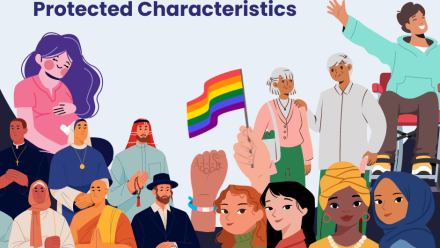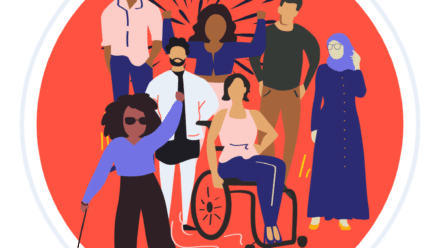Disability History Month 2023
13th December 2023 by Scarlett James
We’ve been sharing facts about Disability History all throughout Disability History Month. We’ve compiled them here along with a downloadable infographic for you!
This is by no means a comprehensive list of all the influential moments within our collective history. It is merely a starting place for reflection on how far we’ve come and how far is left to go.
Download the infographic in dark colours
Download the infographic in light colours
Watch the timeline video here:
All the text in the infographic and our posts throughout the month is below.
This Disability History Mshonth, D&A invites you to join us in celebrating how far we’ve come, and the achievements of our community along the way.
1508
Gotz von Berlichingen was known as the ‘German Robin Hood’. He lost his right arm protecting peasants from their oppressors. Gotz had two prosthetic iron hands made for himself.
1535
The UK laws enacted new laws so that local authorities must look after disabled people for 3 years.
1616
G. Bonifacio published a treatise discussing sign language, “Of The Art of Signs.”
1755
Samuel Heinicke established the first oral school for Deaf people. Charles Michel Abbe del’ Epee established the first free school for Deaf people.
1791
Edward Rushton, an abolitionist, lost his sight due to awful conditions on a sinking ship carrying enslaved people. He then opened a school in Liverpool for blind people that remains today.
1829
Louis Braille, a blind man, invented the Braille alphabet. The alphabet consists of raised tactile dots that enable blind people to read.
1918
Across the world 8 million servicemen returned from war with a disability.
1935
The ‘League for the Physically Handicapped’ in New York organised a sit-in against the ‘Works Progress Administration’. They generated 3,000 jobs for disabled people.
1939
In the UK, the Ministry of Labour launched a recruitment drive aimed at people previously deemed unfit for work.
1944
In the UK, the Disabled Persons (Employment) Act sets up a quota system requiring employers with 20 or more employees to ensure that at least 3% of their workforce are disabled people.
1970
Ed Roberts and peers at Cowell (UC Berkeley Health Center) form a group called the Rolling Quads. They form the Disabled Students’ Program on the U.C. Berkeley campus.
1970
UK parliament passes the Chronically Sick and Disabled Persons Act. It’s the first in the world to recognise and give rights to disabled people.
1971
Ed Roberts and his peers created the first Center for Independent Living (CIL) in Berkeley, CA . He is nicknamed the father of the Independent Living movement
1977
In San Francisco, disabled activists occupied government offices. They were protesting against Secretary Califano’s refusal to sign Section 504 regulations. Their month-long sit-in became the longest federal building occupation. It successfully led to the signing of the regulations.
1980
In India the NBF led a demonstration in 1980 for disability rights. This prompted government consideration of legislation for equal rights in education and employment.
1981
The UN designates 1981 as ‘The International Year for Disabled People’. Disabled People’s International was created and now has consultative status with the United Nations.
1982
China’s Constitution guaranteed support for disabled individuals. The support included material assistance, social services, and educational arrangements for disabled citizens.
1990&92
Thousands of disabled people gathered outside London Weekend Television Studios. They protested the patronising portrayals of Disabled people by ITV during telethons.
1995
Two female disability leaders from South Africa and Zimbabwe got elected to parliament for the first time in the region.
2006
The UN ‘Convention on the Rights of Persons with Disabilities (CRPD)’, was adopted. It is an International treaty to protect and promote the human rights of disabled people,
2011
On 10th February, 2011, Diversity and Ability was born!


